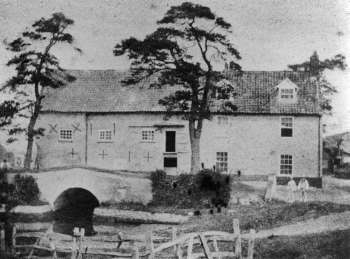 |
|
1870
|
|
Bintry Mill
River Wensum |
 |
|
1870
|
|
Bintry Mill is set in a valley along with its farm at one end of the flood pain and stands in magnificent isolation a mile from the village of Bintree. The mill and house are adjoining and used to share the same roof line until an additional floor was added to the mill around the turn of the century. Both buildings are of red brick under a Norfolk pantiled roof. The mill may well stand on the site of an earlier mill dating back to 1454. |
|
To be sold separately. Three dwelling houses and a
windmill to each house, late of Ann Ramsadle of Ingworth, situated in
several parishes of Horning, Happisburgh & East
Ruston. For particulars enquire of Mr Thomas Cubitt of Horning, Mr
John Gill of Bintree and Mr Kemp of Swafield. |
|
My great grandfather several times removed was John
Gill who was employed as miller by, I think, the Hasting’s Astley
Estate. He was either not much good at his job or had a lot of bad luck,
because he was ‘bailed out’ in his father-in-law’s will: John Gill's gravestone is set against the wall of Bintree Church. He died on 12th October 1772 at the age of 42 years. |
 |
Insurance taken out with Royal & Sun Alliance by William Hook - 13th February 1787 |
Will of Thomas Eastoe of Honingham |
|
| Executors:- | Ann, wife, executrix William Hook, Bintry, Miller Edward Wells, Hockering, Carpenter |
Water_Mills, Wind_Mill, Lands, Tenements & Herediments to wife & Thomas Eastoe, son, for 6 years, then for sale dividing proceeds amongst wife & children. |
|
Cornelius Spooner was working at the mill from c.1801-1803 before moving on to Twyford. He was married to Mary née Towell and their children were baptised at Bintree. John was baptised on 2nd April 1801 and Edmund on 1st January 1803. It is not known if Cornelius Spooner was the miller or an employee. |
On 16th January 1862 at New Hartley Colliery, 9 miles north of Newcastle, miners became entombed when an engine beam broke, blocking the only working shaft, resulting in the loss of 204 lives. |
The Committee have much pleasure in acknowledging the receipt of the following contributions on behalf of the above Fund... Mr. Burrell, Bintry Mill, Norfolk £6-0s-0d Hartley Colliery The Times - Thursday 13th February 1862 |
In the census of 1851, William Dawson Seaman was living with William Burrell who was the then miller, presumably because William Seaman's parents, Thomas and Susan, were both dead and the majority of his 4 remaining brothers and sisters were in Gressenhall workhouse. |
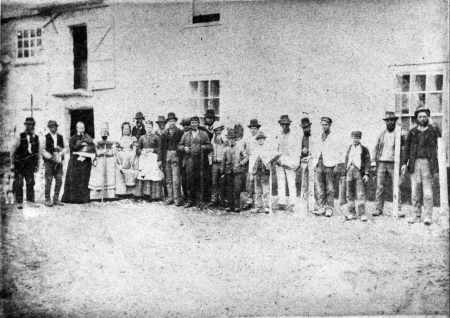 |
Bintry staff and building workers enlarging the mill in 1870 |
|
The Seaman family also took on North Elmham mill in 1904 but there was a family rift and Robert John Seaman moved away to take on the tenancy of Bintry mill, which at that time was part of the Hastings Estate. |
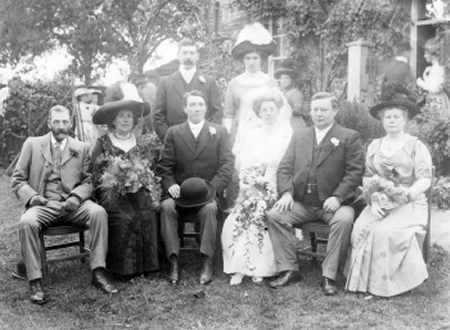 |
|
Seaman
family wedding photograph
|
|
Robert J. Seaman (sen) is seated on the left with his wife next to him. Their son Robert John Seaman is standing at the back with his sister May. George and his new wife are seated in the centre. William and Constance (from North Elmham mill) are seated on the right. |
|
In March 1919 Albert Edward Delaval, Lord Hastings and Robert J. Seaman came to an agreement on the hire of Bintry Mill. 108 acres 3 rods 1 perch would be hired for an annual rent of £188 6s. A formal agreement followed on 7th January 1921. During the depression in 1933, the rent was decreased to £109 per annum. |
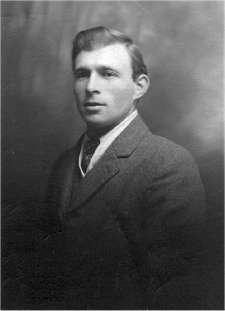 |
Samuel Bush journeyman miller for R. J. Seaman in the 1950s |
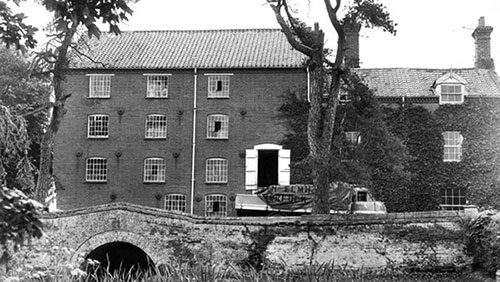 |
Seaman's North Elmham lorry June 1958 |
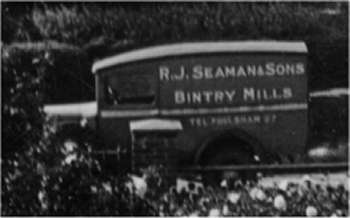 |
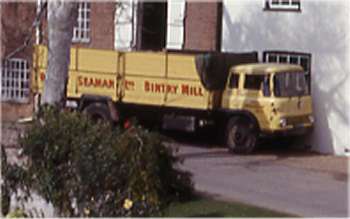 |
|
R. J.
Seaman's delivery van in the 1950s
|
R. J.
Seamans' lorry in September 1965 |
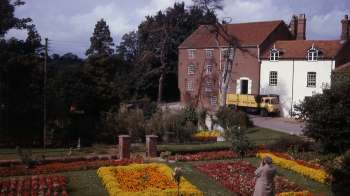 |
|
Bintry
gardens in September 1965
|
|
Robert Seaman jnr was a fanatical gardener and would mobilise all the workers to protect his borders whenever cows were moved past the mill or gardens. He would also vent his wrath on any lorry driver who unwittingly put a wheel onto the verge. |
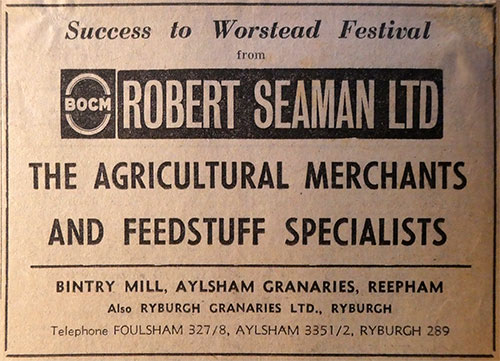 |
|
Eastern Daily Press advert c.1967 |
|
The mill was
enlarged in 1870 by a building firm from Hindolveston, when an additional
floor was added. |
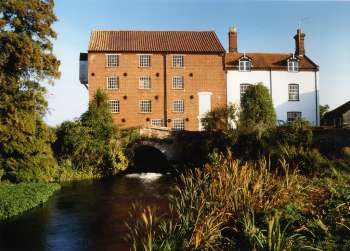 |
|
c.
2000
|
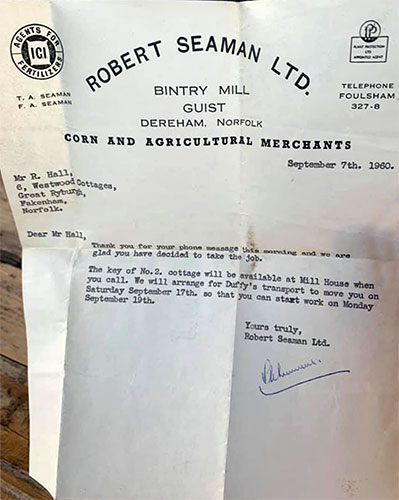 |
The above letter reads - |
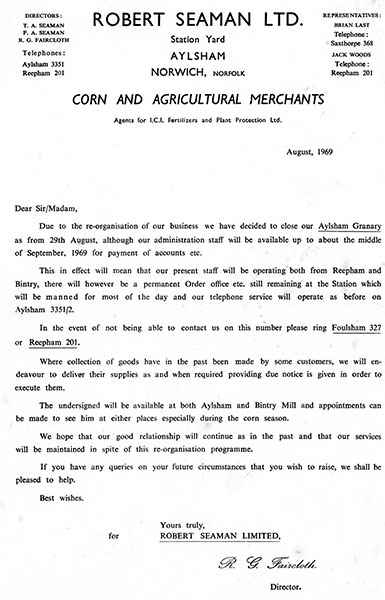 |
Letter announcing Aylsham Granary closure - August 1969 |
|
The waterwheel was removed in 1947 and the wheelhouse floor was concreted over. Motive power was moved from water straight to electricity, unusually, neither steam or diesel were used. The mill finally ceased operating in 1980, when it was rolling oats. In 2004 Paul Seaman was still living in the mill house, being the 4th generation of the Seaman family to live there. |
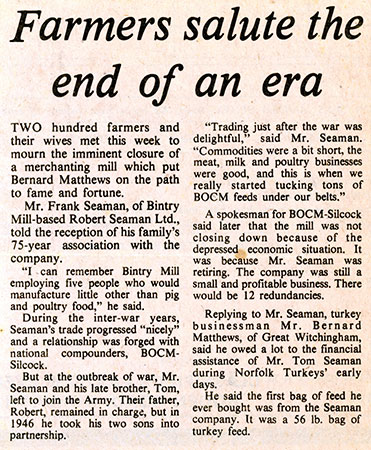 |
EDP article announcing mill closure - 28th March 1981 |
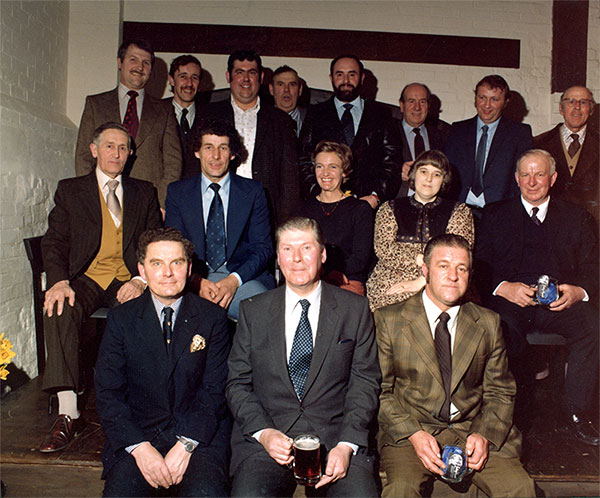 |
Robert Seaman Ltd. closing down dinner at Reepham Old Brewery - 1981 Back row l-r: Brian Last, Glyn Thomas, Kevin Roye, Mike, John Franklin, Charlie Gaymer, Nigel Riseborough Middle Row: Bob, NevilleLaskey, Jane, Anita, Jocky Rawlings Front Row: Derek Bickford-Smith, Frank Seaman, Claude |
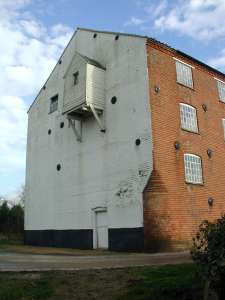 |
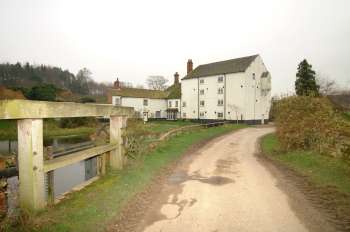 |
|
The lucam 15th November 2002
|
Road to the mill 8th December 2002 |
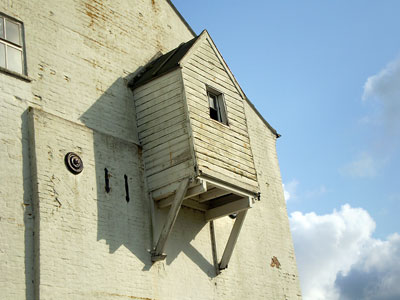 |
|
Lucam 7th September 2008 |
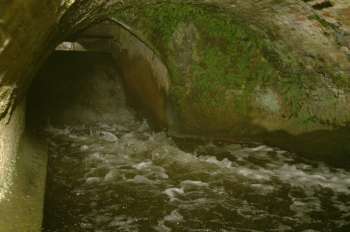 |
|
Wheelrace
8th December 2002
|
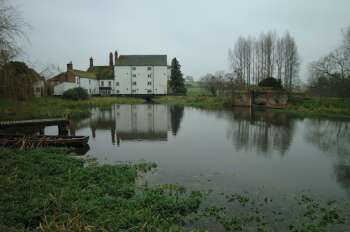 |
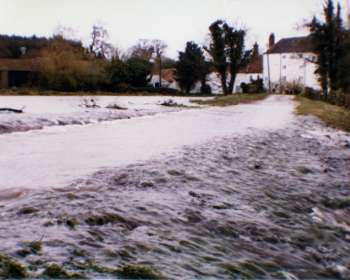 |
|
8th December 2002
|
Flood during the 1990s |
The Pull of Bintry |
Every year I develop an attack of what my husband calls "Bintry madness." Were we nearer, I might stand in danger of being accused of haunting the area around the mill, morning, noon and night.
In May and June it blossoms out in all the colours of the rainbow and I can never cease from drinking in its beauty. Not that it isn't beautiful at any time. I have seen it when the trees are bare, the river dark and menacing, when the birds have hushed their song and the sky is grey and lowering - and still I love it. I have seen it in the rain, or when a pale streak of sunlight has swept across the early crocuses; when rough winds have shaken the petals from the roses and torn leaves off the trees to sail upon the swiftly-flowing water, and still it fascinates me. But to see it when the azaleas and the rhododendrons are in bloom, when the pansies are lifting their faces to the sun, when all the trees are in new leaf and the red may and the chestnut spikes stand in all their glory.…! To smell the honeysuckle twining the old bridge…. To watch a brood of ducklings paddling furiously against the current…. To listen to the music in the air around you and the distant call of the cuckoo…. To hear, above the gurgle of the water, the plop of a silvery fish and see the swallows skimming low under the bridge…. To catch a glimpse of the rare blue flash of a kingfisher.… This is an English heaven! "Bintry madness" it may be. I prefer to think of it as an appreciation of a tiny part of what Shakespeare called "This other Eden; demi-paradise." |
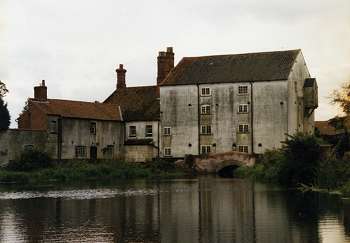 |
|
The
blackened mill complete with plastic bridge in 1966
|
|
In 1996 Bintry mill was used as the location for the film Mill on the Floss. Amongst other necessary cosmetic changes a plastic bridge was built against the back of the mill and the white walls of the mill and house were distressed by blackening them. |
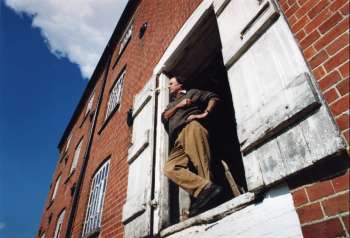 |
|
Paul
Seaman, 4th generation of the family at the mill c.1999
|
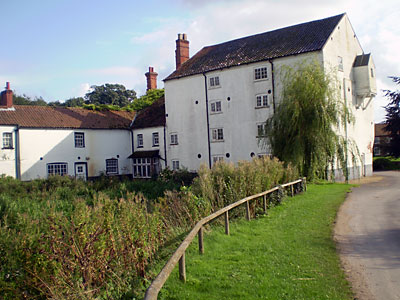 |
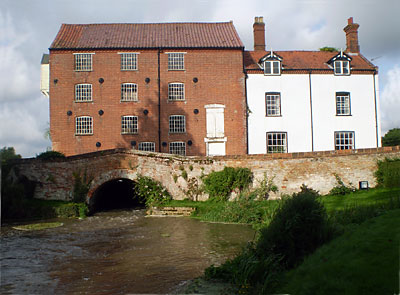 |
|
7th September 2008 |
7th September 2008 |
Mill ownership and water rights |
| 5.28 The Environment Agency does not own all of the mills or water rights at control structures along
the River Wensum SSSI (Table 6). Where private mill rights exist, the Environment Agency has
limited powers to control their operational regime and retention levels. However, during initial
contact with stakeholders, some mill owners were supportive of the concept of river restoration
and were prepared to consider options for altering the future water management regime on
impounded river reaches. 5.29 None of the mills are now used for their original purpose and only at Lenwade, Bintry and Elsing have the undershot water wheels been retained. Whilst owners can vary the retained water levels within the old milling limits, the general practice is to hold the water at a relatively high level. This is largely for aesthetic reasons (in order to maintain an expanse of water upstream of the mills) but also due to increasing levels of siltation of the mill pools. 5.30 The fragmentary nature of mill ownership is highlighted during periods of high flow. Each mill owner operates their controls to evacuate floodwaters, often without reference to owners either upstream or downstream. This emphasises the need for improved communication between mill owners/operators and riparian owners/residents. Given the significance of mills to restoration plans on the River Wensum, a potential constraint relates to the willingness of mill owners/operators to accept/implement changes in water levels, structures and channel works. 5.31 Conversely, mill owners may regard the development of the River Wensum Restoration Strategy as an opportunity for funding to modify structures that might be regarded as a liability in terms of maintenance, operation and health and safety. River Wensum Restoration Strategy - Natural England |
| N.B. Bintry Mill's wheel was removed in 1947 and Lenwade's c.1948. Elsing Mill's wheel had no paddleboards remaining by 2003 and was thus unable to impede the flow of water - JJN |
Mills |
|
6.16 The mill structures have a profound influence on the river system in the Wensum catchment. If high retained water levels continue upstream of the mills, they would form a significant constraint on the effectiveness of river restoration. Physical modifications at mill sites should aim to restore a more natural longitudinal profile to the river and to remove or reduce physical barriers to the movement of fish and wildlife. Whilst historically a number of mills have been in existence for centuries these have always very actively stored and released water and the cessation of working of the mills in combination with dredging has had a significant impact. 6.17 The recommended actions at mill structures are shown in Table 9. At a number of sites there is no mill building and removal of water level control structures would be the desired course of action. However, often there are multiple channels at a mill site and it is likely that some hydraulic controls would be needed to maintain a split of flows to all channels. These would probably take the form of a fixed crest and a natural chute that would allow the passage of fish and woody debris. At locations where the water level control structures are part of the historic mill building, there is often a variety of passageways and the best way to lower levels will need to be identified using more detailed survey. Initial action can be taken at low cost by merely adjusting operating levels using the available gates and stop boards. The reduction in head that could be achieved at a typical dry weather flow is also summarised in Table 9. The estimated maximum reduction in backwater length through changing the operational level of the sluices (that is, without the need for major engineering works) is 18km. This would reduce the length of the River Wensum SSSI affected by backwater from mills from 67% to 40%. To achieve this it would be necessary to ensure that no channels downstream of gates or fixed weirs are affected, but this could be a cost effective start to the Wensum restoration. 6.18 It is likely that at some locations, where the channel course has been altered and the mill channel is significantly higher than the natural channel, the main flow could be diverted upstream of the current mill location. Maintaining some flow to the original mill weir is likely to be preferable for aesthetic and heritage reasons, so by-passing is likely to be required in conjunction with lowering of the mill weir. Sites where such a solution is envisaged are at Great Ryburgh and Lyng. 6.19 The control structures at Costessey, Swanton Morley and Fakenham are used for flow gauging by the Environment Agency. Lowering these weirs may mean that the existing gauging arrangements will need to be replaced by other methods, such as ultrasonic techniques. The weir on the main channel at Swanton Morley has a two stage drop and a significant reduction in water level could be achieved there without affecting flow gauging through the bridge. 6.20 A former mill known as Gogg's Mill near to Fakenham was removed as part of the drainage improvement works of the 1950s. The channel upstream of the mill has narrowed significantly through the accretion of silt berms, and provides a good case study of the extent to which natural recovery can help restore natural river form and function. 6.21 As part of the River Wensum Water Level Management Plan being prepared by Entec (2007) the views of some private owners on changes in operating level have been canvassed. In broad terms this is not opposed, but there is concern to maintain an attractive setting incorporating some mill pond in line with the historical context particularly at: 1) Elsing 2) Great Ryburgh 3) Bintree 4) North Elmham 5) Lenwade. 6.22 A reduction in the retained water level at mills may constrain the ability to direct water through all the existing channels at mill sites, should this still be required, there may be a need to carry out physical modifications to some of the subsidiary water level control structures. River Wensum Restoration Strategy - Natural England, 26th June 2009 |
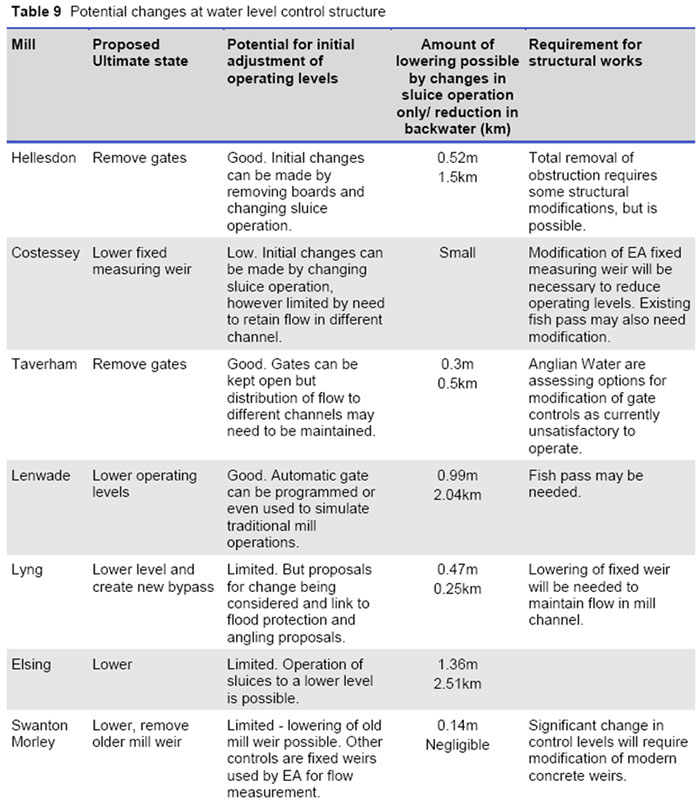
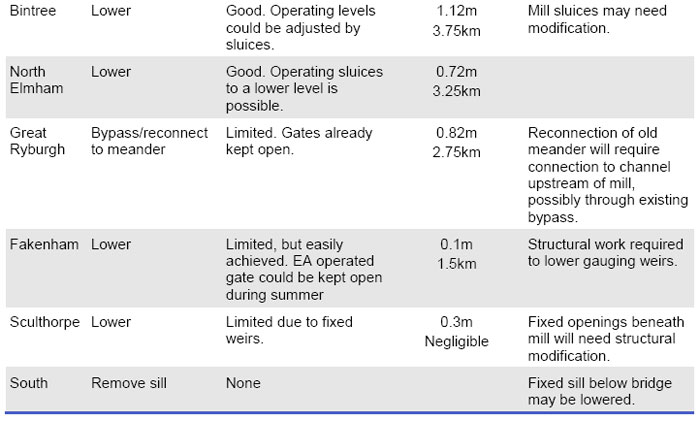
Major project to restore Norfolk river |
|
A major project is under way to restore a 45-mile stretch of a Norfolk river which is described as one of the county's "hidden gems." The River Wensum is a chalk river with a range of important wildlife and landscape features and is a Site of Special Scientific Interest and Special Area of Conservation. The Environment Agency is working in partnership with Natural England, landowners, fishing clubs and others to restore a section of the river, which has had water quality problems caused by issues such a high levels of phosphates, over abstraction, siltation and modification to the channel. A range of projects are being carried out as part of the River Wensum Restoration Strategy to change the river, which has been made too deep, too wide and has been straightened. Richard Leishman, of Natural England, said: "It is really exciting to be able to take a fresh look at how society values the river and to find new ways of managing the river while improving wildlife habitat. We're really excited by the number of restoration schemes that have already been achieved and hope it will fuel the development of future projects to improve one of Norfolk's hidden gems." The Environment Agency and Natural England have held six public events to get the views of local people and groups and the feedback will be used to plan the projects. Work on the river began last year when two gravel glides were created at Attlebridge to provide spawning habitat for fish. A large silt island was also removed at North_Elmham_Mill to ensure a good water flow in flood conditions and silt has been removed from other parts of the river. A major project at Bintree was completed in December to improve 700 metres of the river. It was done with co-operation of the landowners and the trout fishery and included reconnecting the river with its floodplain, narrowing the channel, reinstating the gravel river bed and putting some of the meanders back along the channel. Project manager John Abraham, of the Environment Agency, said: "The strategy has now moved into the implementation phase, which is a very exciting time. Following from our successful scheme at Bintree, we are looking to bring further schemes to detailed design, where the opportunities present themselves. There is still a lot of work to do behind the scenes, but it is great to see work now being carried out to improve both the form and function of the River Wensum, which in turn will create a better environment for the wildlife that relies on the river." Ian Clarke, Eastern Daily Press - March 2010 |
River Wensum stops flowing through mill for first time in a century |
Bintry Mill is located on the headwaters of the Wensum, about a mile west of the village of Bintree, near Fakenham. |
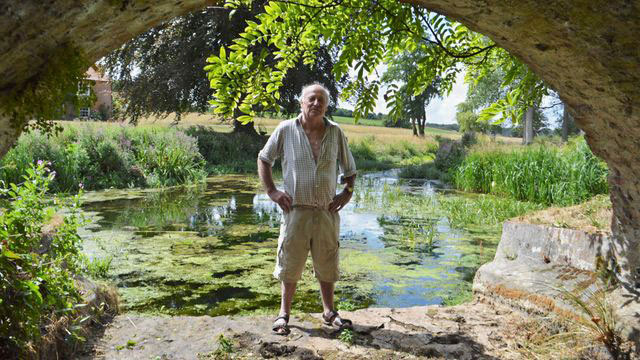 Paul Seaman pictured in the dried-up water channel beneath Bintry Mill |
| But although the lack of rainfall is a key factor, he said it has been compounded by a damaged river bank half a mile upstream, which is leaking water into another stream, "bypassing" the mill and rejoining the Wensum below the mill. The Environment Agency said bank repairs are due to be completed by the end of this year, and that no environmental issues have been reported on this section of the protected river, which is designated as both a Site of Special Scientific Interest (SSSI) and a Special Area of Conservation (SAC). But Mr Seaman said he is concerned for the fish in his private fishery, as the reduced river flow leaves the channel "choked" with weeds and algae. "My family has been here 120-odd years, but I have never known the mill to have no water coming under here," he said. "A mill without water is like a pub without beer. "Because I can lay in bed and listen to it, I can tell the flow just by acoustics, I just feel I am missing something, I am losing my empathy with the river. It is not talking to me any more. "If we had normal rainfall there would still be enough to come through here. But it is a combination of the lack of rainfall and this unresolved engineering issue upstream that has dried the mill up. "The water is going through a hole in the bank and coming down a side stream, and joining up with the river further down from the mill. "Now there is not enough water coming through to oxygenate the fish, so the fish are suffering. The whole river is not affected, it is just the area around the mill." An Environment Agency spokesman said: “We are aware of a breach in the bank of the River Wensum upstream of Bintry Mill which, along with the prolonged dry weather, is reducing flow in the main channel. “We are working closely with the landowners, the Internal Drainage Board and Natural England to fix the issue, and we expect to complete work this year. “To mitigate, we have lowered the water level at our sluice to encourage more flow through the mill, and are considering whether this can be lowered further in the short-term. There have been no reports of environmental impact in the area but we continue to monitor the situation." Chris Hill, Eastern Daily Press - 5th August 2022 |
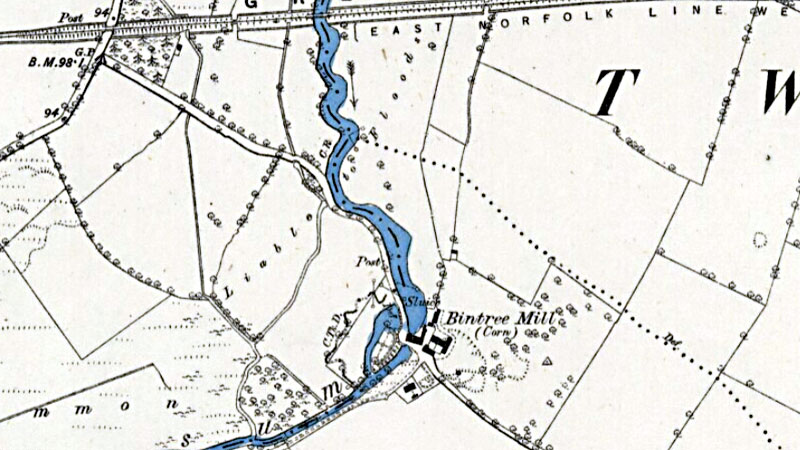 |
6" O. S. Map 1885 Courtesy of NLS map images |
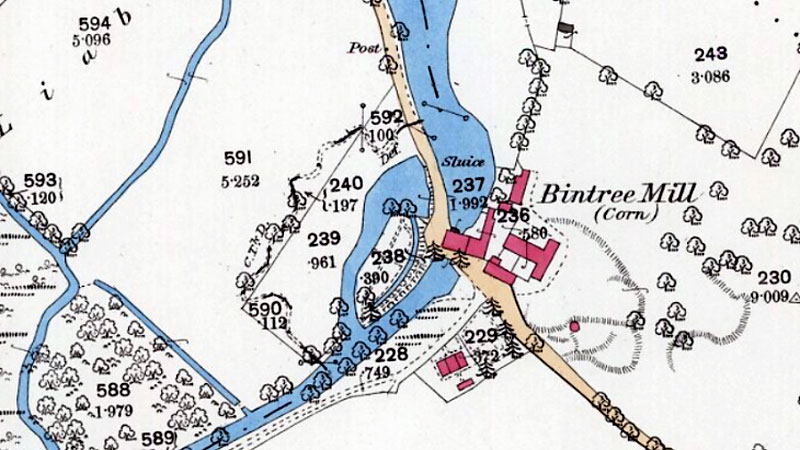 |
25" O. S. Map 1885 Courtesy of NLS map images |
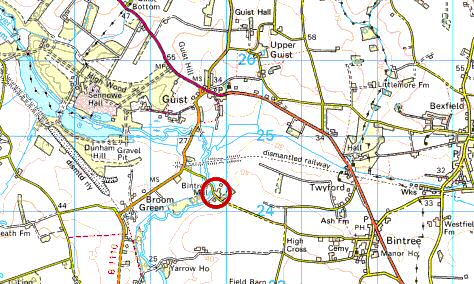 |
O.S. Map 2005 Image reproduced under licence from Ordnance Survey |
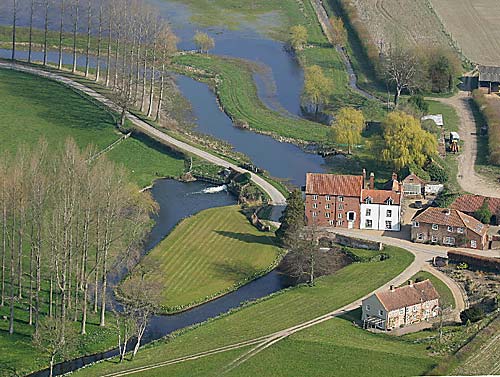 |
8th April 2007 |
|
1767: John
Gill |
If you have any memories, anecdotes or photos please let us know and we may be able to use them to update the site. By all means telephone 07836 675369 or
|
| Nat Grid Ref TF 99882424 | Copyright © Jonathan Neville 2003 |